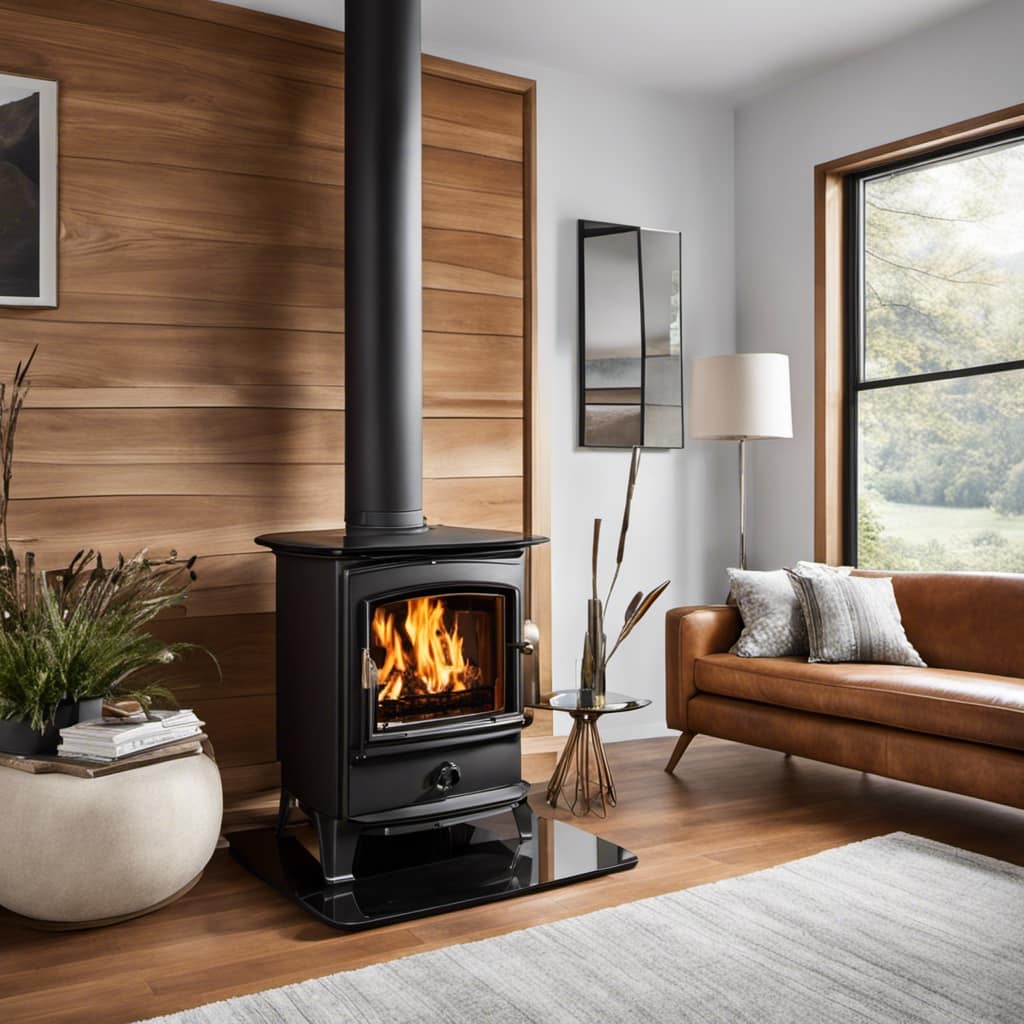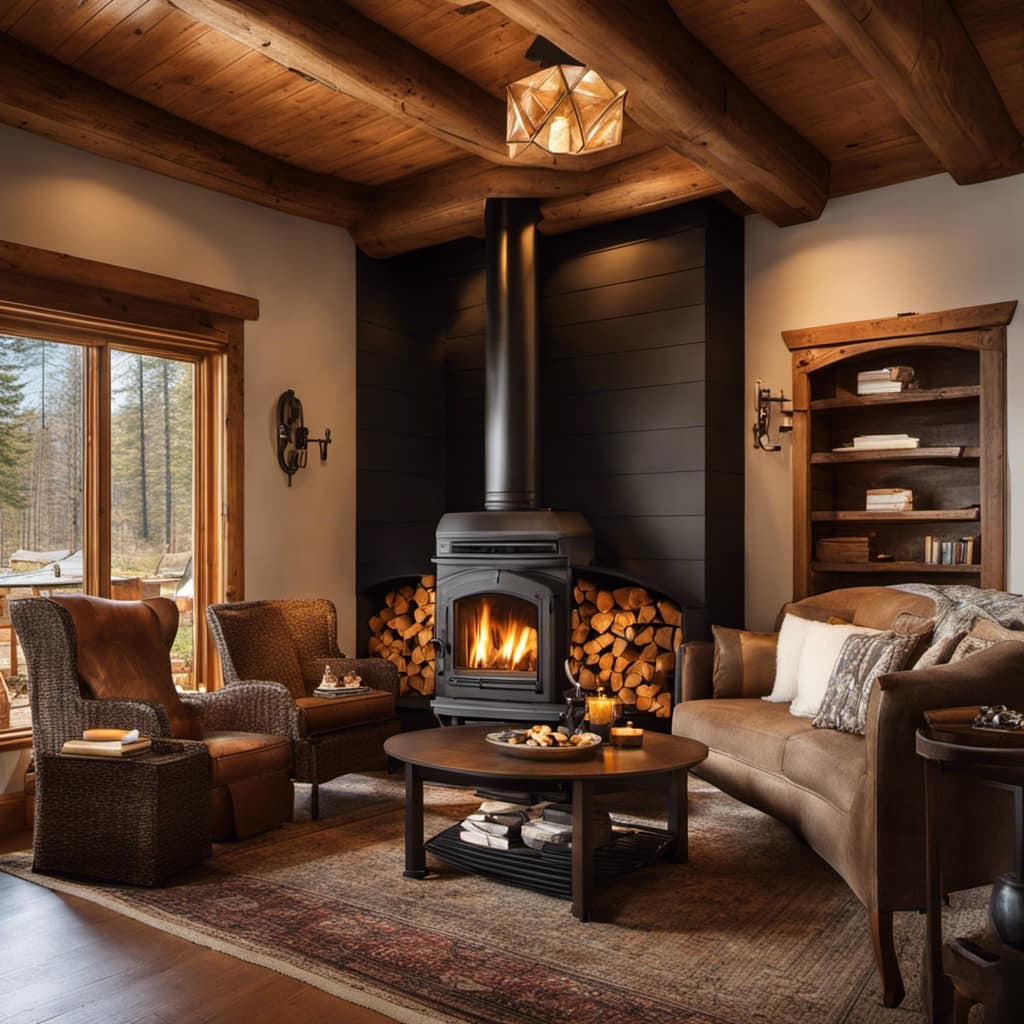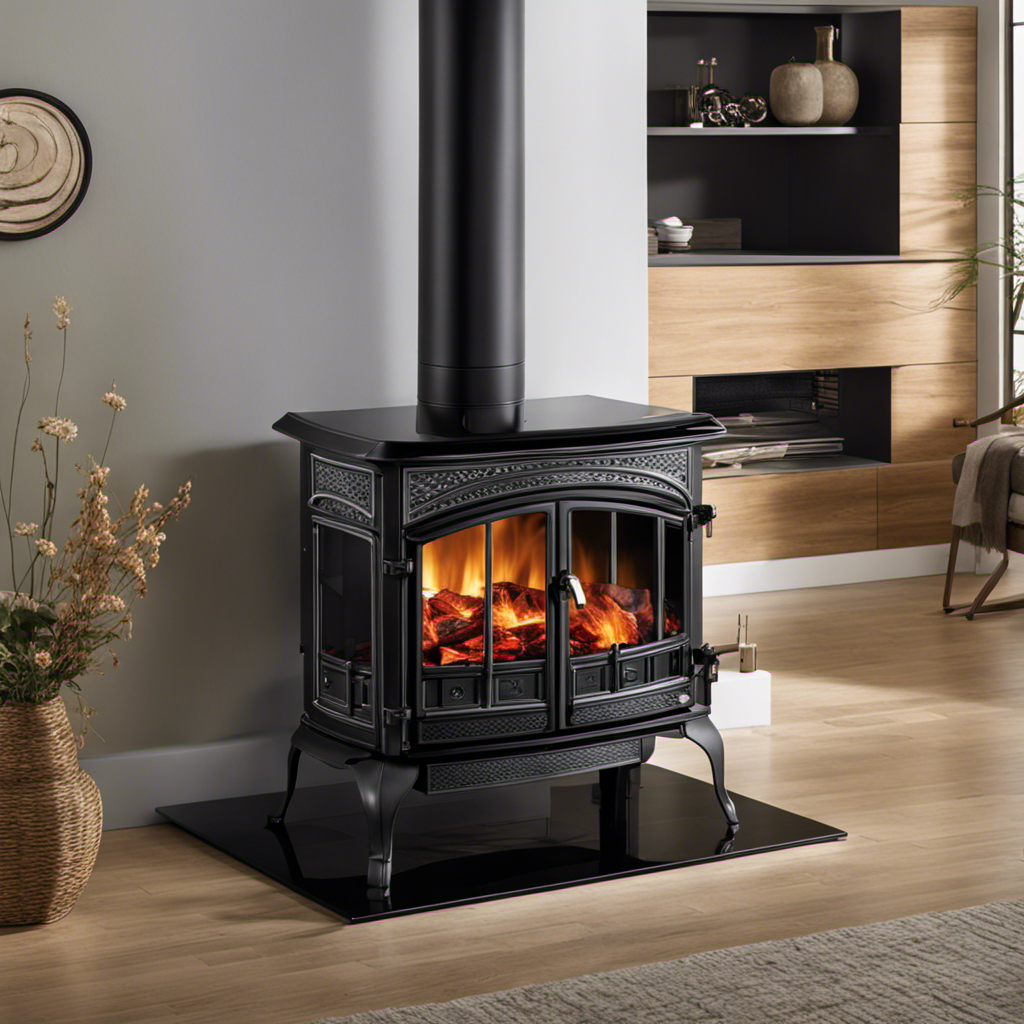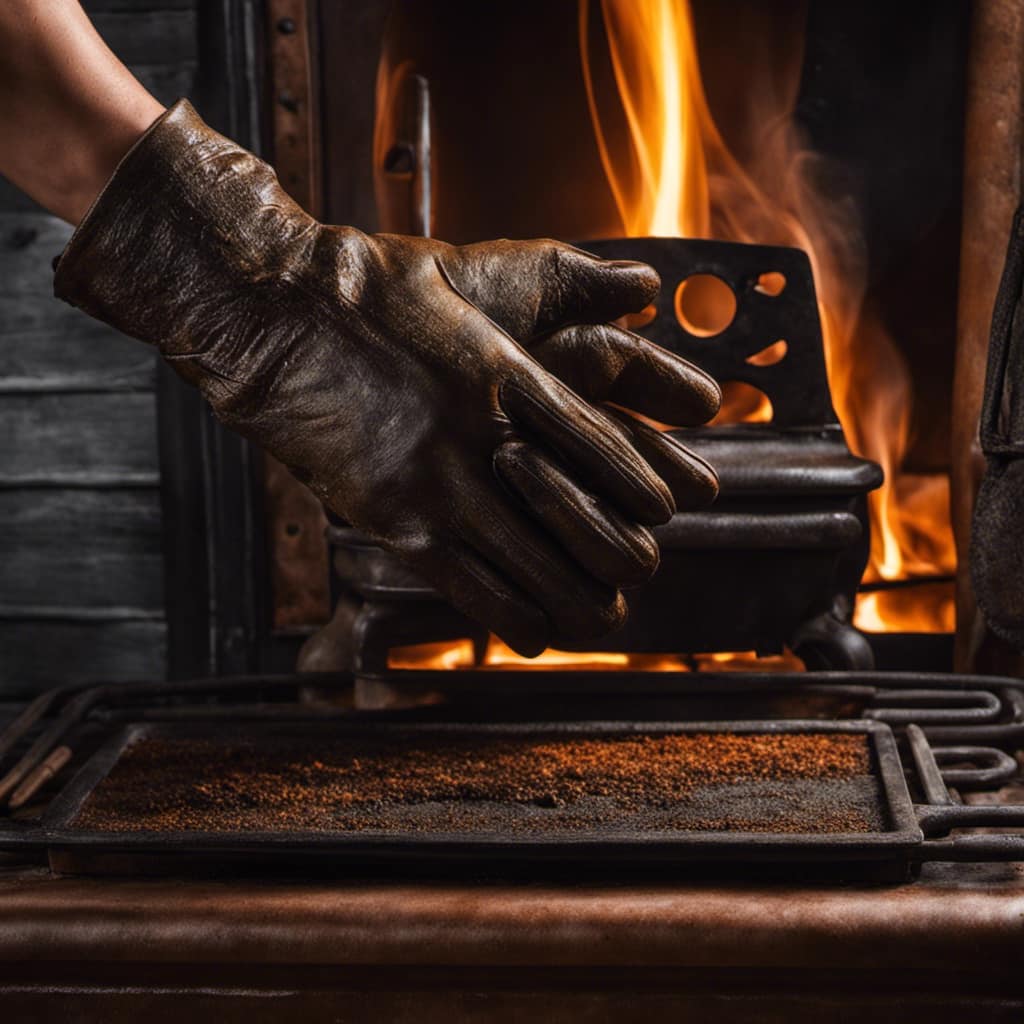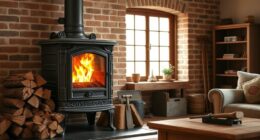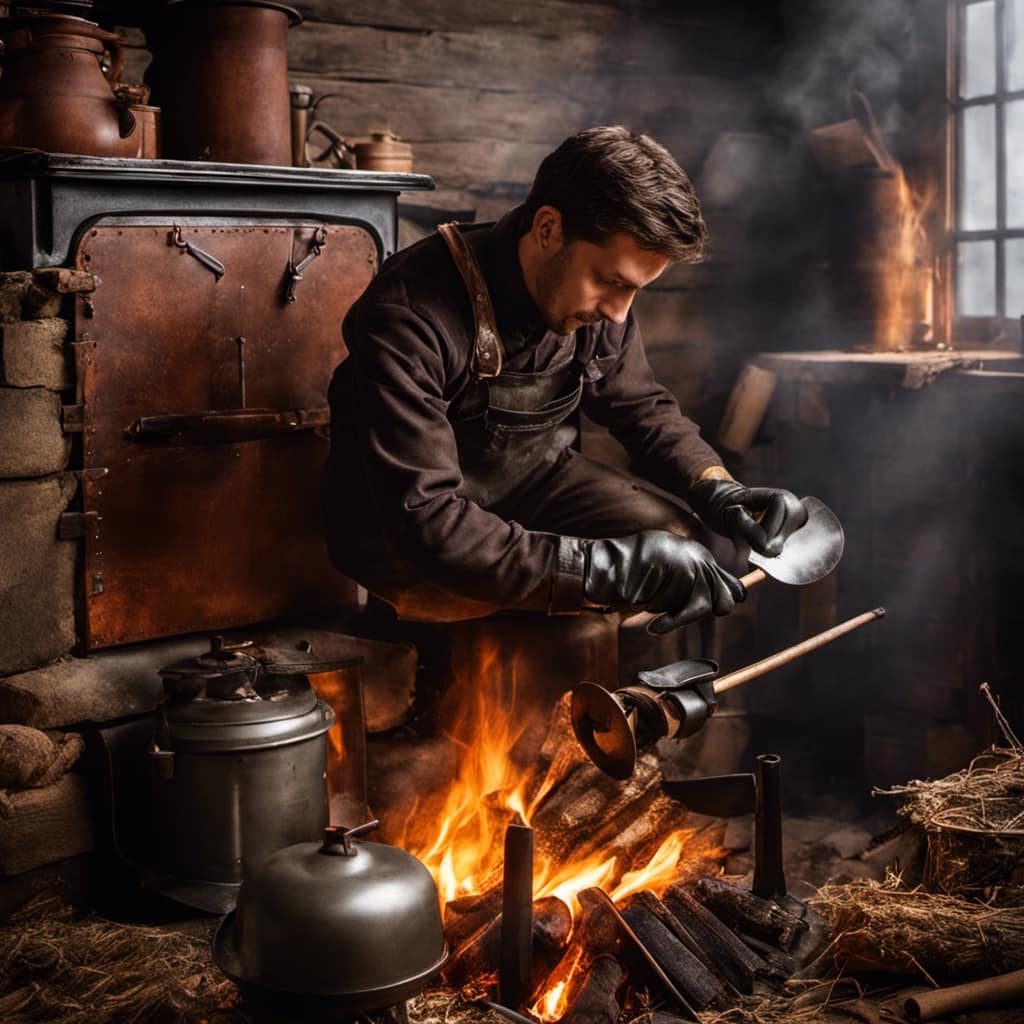
As someone who owns a home and is contemplating the ideal wood stove, I frequently inquire, ‘What level of BTUs is actually necessary?’
Well, worry not! This article aims to answer that burning question. By delving into factors like space size, insulation, and regional climate, we’ll help you determine the ideal BTU output.
Whether you’re cozying up a bedroom or heating a living room, we’ve got you covered. So sit back, relax, and let’s explore the wonderful world of wood stoves and BTU requirements.
Key Takeaways
- Wood stove efficiency determines the effectiveness of converting wood fuel into heat.
- Different types of wood have varying energy content and burn rates.
- The size and insulation of the space being heated affect the BTU requirements.
- Climate and region considerations play a significant role in determining heating efficiency.
Factors Affecting BTU Requirements for Wood Stoves
In my experience, certain factors can greatly influence the BTU requirements for wood stoves.

One crucial factor is wood stove efficiency. It determines how effectively the stove can convert wood fuel into heat. High-efficiency stoves can generate more BTUs per unit of wood consumed, making them more cost-effective and environmentally friendly.
Another factor to consider is choosing the right wood. Different types of wood have varying energy content, moisture levels, and burn rates. Hardwoods like oak and maple have higher energy content and burn longer, producing more BTUs. Softwoods like pine and fir, on the other hand, burn faster but generate fewer BTUs. By selecting the right wood for your wood stove, you can optimize its heat output.
Moving on to the next section about calculating BTU output, it’s important to consider the size and insulation of your space.
Calculating BTU Output: Size and Insulation of Your Space
I should consider the size and insulation of my space when calculating the BTU output. This will ensure that I choose a wood stove that’s capable of effectively heating my room. Here are the key factors to consider when evaluating the size and insulation of my space:
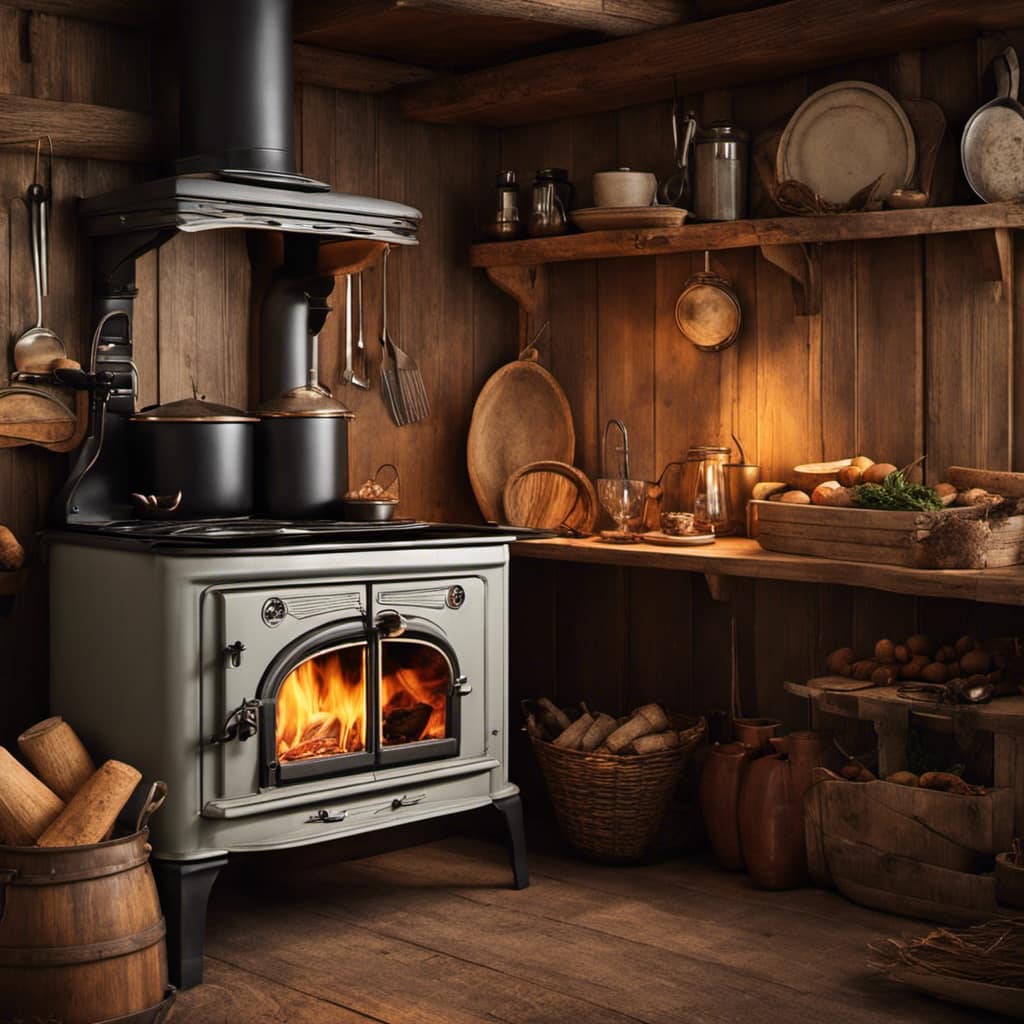
- Measure the square footage of the room to determine the heating needs.
- Assess the insulation in the walls, windows, and doors to understand the heat loss.
- Calculate the BTU requirements based on the desired temperature rise.
- Consider any additional factors such as high ceilings or poor insulation that may require a higher BTU output.
Calculating the fuel efficiency of a wood stove is crucial to ensure cost-effective heating. By properly evaluating my heating needs and taking into account the size and insulation of my space, I can choose a wood stove with the appropriate BTU output for efficient and effective heating.
Understanding Climate and Region Considerations
Living in a colder climate with harsh winters, it’s important to consider the specific region and its climate when choosing the appropriate wood stove for my heating needs.
Climate variations play a significant role in determining the heating efficiency required from a wood stove. For instance, regions with extremely cold winters will require a wood stove with higher heating efficiency to keep the space warm and comfortable.
Additionally, it’s essential to consider the insulation of the space being heated, as well as any potential heat loss through windows and doors. By taking into account these factors, I can ensure that I select a wood stove that’s capable of efficiently heating my space, while also keeping energy consumption and costs in check.
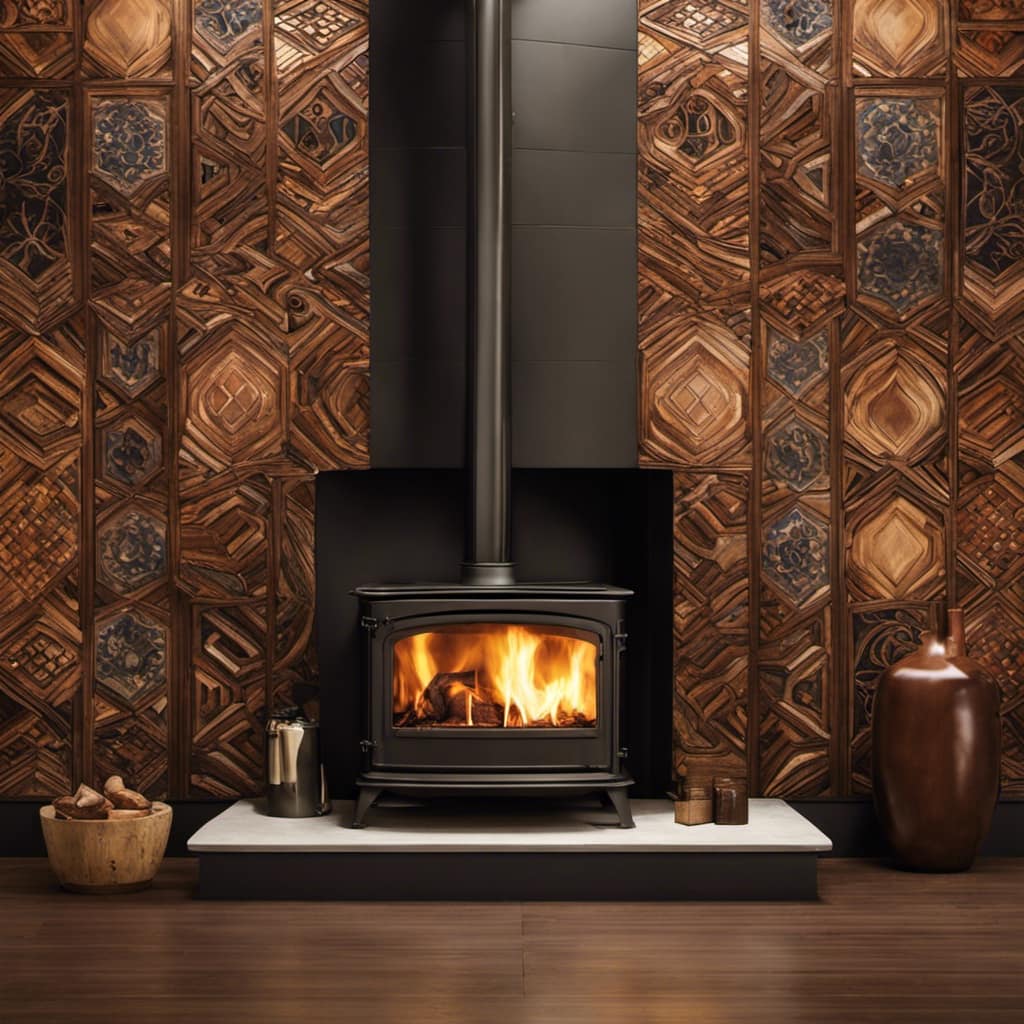
Determining BTU Needs Based on Room Function
When calculating the heating needs for each room, it’s important to consider the specific function and size of the space. Factors such as room size and heat distribution play a crucial role in determining the BTU requirements for your wood stove. Here are some key considerations:
-
Room size: The square footage of the room directly affects the amount of heat needed. Larger rooms require more BTUs to maintain a comfortable temperature.
-
Heat distribution: Consider how well the heat will be distributed throughout the space. Factors such as room layout, insulation, and the presence of doors and windows can impact heat distribution.
-
Function of the room: Different rooms have different heating needs. For example, a living room might require more heat compared to a bedroom.

-
Climate considerations: The climate in your region also influences the heating needs. Colder climates will require higher BTU outputs to combat the lower outdoor temperatures.
Additional Factors to Consider When Choosing a Wood Stove
Taking into account factors such as efficiency, size, and safety features is essential when selecting the right wood stove for my home.
When it comes to installation requirements, it’s important to consider clearances to combustible materials, proper venting, and compliance with local building codes.
Additionally, maintenance and safety precautions should be taken into consideration. Regular cleaning of the chimney and stovepipe is necessary to prevent the buildup of creosote, which can lead to chimney fires.

It’s also important to follow manufacturer’s instructions for operating the wood stove safely, including proper use of dampers and ensuring proper airflow for efficient combustion. Installing a carbon monoxide detector is another important safety precaution.
Frequently Asked Questions
What Is the Average Cost of a Wood Stove?
The average cost of a wood stove depends on various factors such as size, brand, and features. Wood stove options range from $500 to $3,000, with higher-end models offering advanced functionalities and better efficiency.
Can a Wood Stove Be Used in a Mobile Home?
Wood stoves can be used in mobile homes, but it’s important to follow mobile home regulations. Benefits of using a wood stove in a mobile home include energy efficiency and cost savings.
Are There Any Safety Regulations or Certifications for Wood Stoves?
When considering wood stove safety regulations and certifications, it’s important to understand the standards in place. These standards ensure proper installation, emissions control, and overall safety. Compliance with these regulations is crucial for a safe and efficient wood stove.
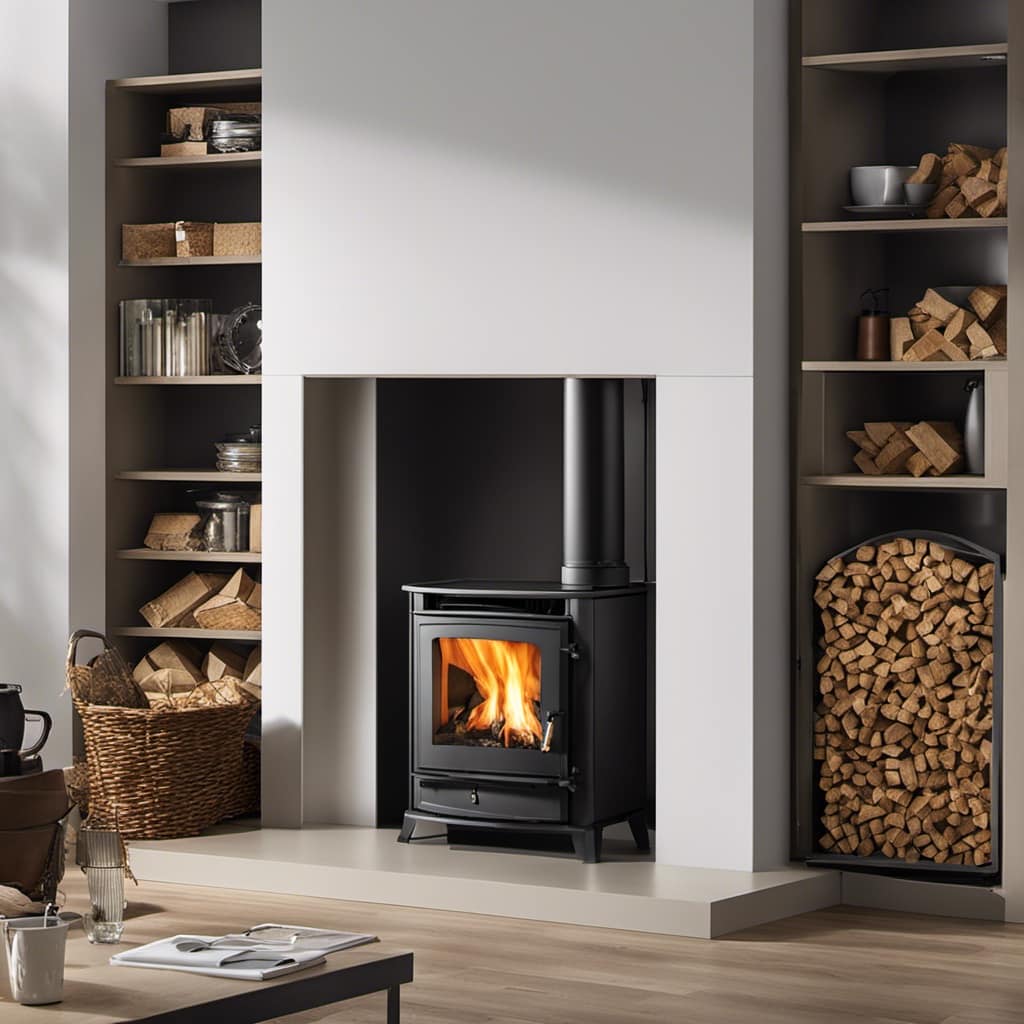
How Often Should a Wood Stove Be Cleaned and Maintained?
When it comes to cleaning and maintaining a wood stove, efficiency is key. Knowing how to clean it efficiently and recognizing signs that it needs maintenance are important steps to ensure its proper functioning.
Can a Wood Stove Be Used as the Primary Source of Heating in a Home?
Using a wood stove as the primary source of heating in a home has both benefits and drawbacks. It provides a cozy atmosphere and can save on energy costs, but it requires constant maintenance and limits alternative heating options for mobile homes.
Conclusion
In conclusion, determining the appropriate BTU requirements for a wood stove involves considering factors such as the size and insulation of your space, climate and region considerations, and the intended function of the room.
By taking these factors into account, you can ensure that your wood stove provides sufficient heat for your needs.

For example, in a case study, a homeowner with a small, well-insulated cabin in a cold climate may require a lower BTU wood stove compared to a homeowner with a large, drafty house in a milder climate.
Growing up surrounded by the vast beauty of nature, Sierra was always drawn to the call of the wild. While others sought the comfort of the familiar, she ventured out, embracing the unpredictable and finding stories in the heartbeat of nature.
At the epicenter of every remarkable venture lies a dynamic team—a fusion of diverse talents, visions, and passions. The essence of Best Small Wood Stoves is crafted and refined by such a trio: Sierra, Logan, and Terra. Their collective expertise has transformed the platform into a leading authority on small wood stoves, radiating warmth and knowledge in equal measure.


